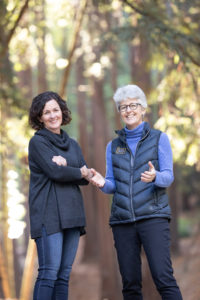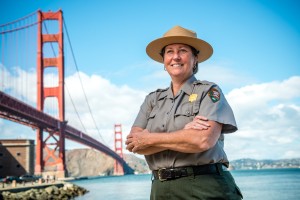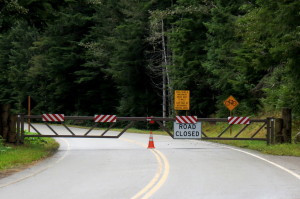Asha Setty, currently the Project Information Manager at the Golden Gate National Parks Conservancy, has worked with the Conservancy for over 12 years.
Soon after graduating with a degree in Environmental Sciences from U.C. Berkeley in 1997, she applied for an internship with the Golden Gate National Recreation Area, and was accepted as a member of the Crissy Field Americorps restoration crew. After her Americorps internship, Asha was hired to help manage of one of the park’s native plant nurseries at Fort Funston, just south of Ocean Beach, where she worked for six years. In her current position, she is responsible for supporting community engagement for park projects.
BN: How did you wind up in the Bay Area?
AS: I grew up in South Carolina, and my family moved from Florida to the East Bay when I was in high school. About five years ago, I moved to San Francisco’s Outer Richmond District and I couldn’t be happier! I feel surrounded by nature in this part of the city — Golden Gate Park is a few blocks downhill, Ocean Beach a few blocks west, and Lands End is just up the hill.
BN: Do you have a favorite place in the Bay Area?
AS: Fort Funston is one of my favorites — it’s the largest remnant of San Francisco’s vast dunes, and it’s perched on top of beautiful, ever-changing sandstone bluffs. The bank swallows, brush rabbits, and dune plants make my heart soar!
BN: How did you get interested in Bay Area nature, and how has that interest evolved?
AS: I had my first “a-ha!” experience with some native pickleweed during a summer internship class near the Oakland Estuary, and I was hooked. I wanted to learn as much as I could about California native plants from then on. Working in native plant nurseries seemed to be the best way to gain the intimate knowledge that I was seeking. It was such a thrill to participate in the process of collecting seeds, growing the plants, and planting them back out.
Then I had the incredible opportunity to work as the stewardship manager at Lands End at the beginning of the landscape transformation efforts, as part of the Trails Forever initiative. It was such an exciting project, improving the trails, the wildlife habitat, the forest health. But what appealed to me more than anything was helping park visitors process the changes they were experiencing in the park. I realized that my interests had evolved, as I became more interested in the human dimension of restoration work.
Over the past few years, I have shifted my focus to community engagement. I currently manage a staff of Project Information Coordinators, whose primary duty is to provide information to the public during project improvements. We have found that people can have a difficult time with change in their beloved parks. It is not unusual for us to encounter emotional responses to the work taking place – especially with trail closures or tree removal. It has been helpful to have staff on-site to explain why the work is happening and to express sympathy and understanding of any concerns park visitors may have.
BN: How do you see using public communication to ensure the future of our parks and open space?
AS: We need to build a better vocabulary in the field of habitat restoration, to explain the work we are doing in a way that resonates with people. We need to help land managers understand what the public values and the public understand what land managers value. This will make our work much more effective.
BN: Do you have any advice for those who might want to get involved in conservation and restoration?
AS: We have great volunteer and internship opportunities in the Golden Gate National Parks – check our website for listings.

.jpg)



